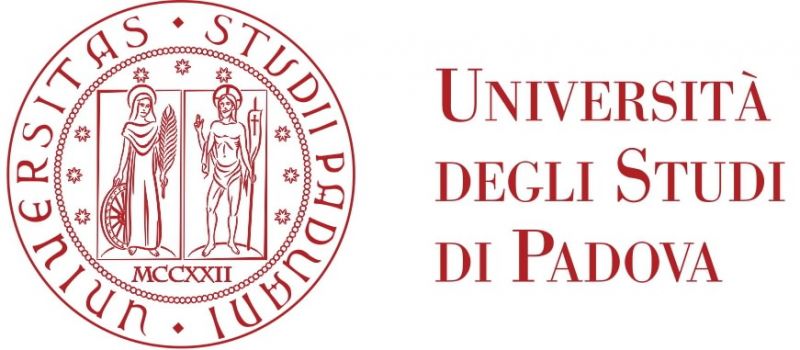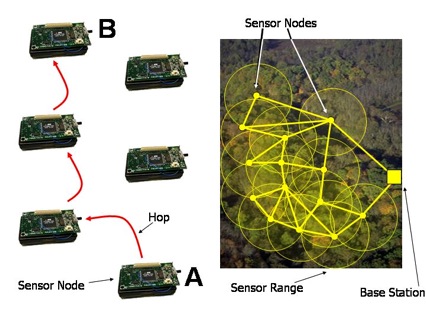

Networked Control Systems
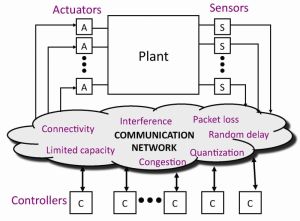
Faculty: A. Cenedese, A. Chiuso, G. Pillonetto, L. Schenato, S. Zampieri
Post-docs: S. Del Favero
Publications: Full list
Description:
A
networked control systems is a system composed of
physically distributed smart agents that can sense the environment, act on it, and communicate with one other through a
communication network to achieve a common goal. Typical examples that
fall into this class are Wireless Sensors and Actuators Networks
(WSANs) for environmental monitoring and control, multi-vehicle
networks for coordinated exploration, camera networks for surveillance,
multi-camera coordinated motion capture, smart grids for energy
distribution and management, etc.. NCSs differ from more traditional
control systems because of their interdisciplinary which requires the
convergence of control theory, communications, computer science and
software engineering. The challenges reside in the design of control
systems that are robust to communication constraints like bandwidth,
random delay and packet loss, to computational constraints due to the
large amount of data to be processed or to the distributed nature of
the sensing and control, to real-time implementation on limited
resources devices, an to complexity to the large number of possibly
unreliable agents involved.
|
RESEARCH AREAS |
|
|
Codes over groups and over rings
In order to improve the spectral efficiency, in communication systems
it is necessary to use more complex digital modulations such as high-order
PSK or QAM. On the other hand, a use of an error correcting scheme is needed
when the channel introduces significant errors in the transmission. A
modulation code can be seen as a set of codewords taking value on an
Euclidean space and the performance of the code is related to the minimum
Euclidean distance between the codewords of the code. Group codes are codes
possessing some symmetries on the Euclidean space which make them much more
treatable than the general codes. Indeed, the concepts of minimal trellis,
minimal encoder and minimal syndrome former can be introduced a sit can be
done for standard linear codes.
|
 |
Consensus algorithm for
distributed estimation and control
Average consensus problems have been widely studied in recent years
both in the context of coordination of mobile autonomous vehicles and in the
context of distributed estimation. In fact, average consensus can be
considered a simple paradigm for designing estimation algorithms implemented
on sensor networks and working in a distributed way. More precisely, assume
in this setup that all sensors independently measure the same quantity with
some error due to noise. A simple way to improve the estimate is to average
all the measures. To do this, the sensors need to exchange their information.
Energy limitations force transmission to take place directly along nearby
sensors and also impose bounds on the amount of data an agent can process.
|
|
|
Control and
estimation under communication constraints
The
emerging area of control with limited data rates incorporates ideas
from both control and information theory. The data rate constraint
introduces quantization into the feedback loop and gives the
interconnected system a twofold nature, continuous and symbolic. In
this paper, we review the results available in the literature on
data-rate-limited control. For linear systems, we show how fundamental
tradeoffs between the data rate and control goals, such as stability,
mean entry times, and asymptotic state norms, emerge naturally. While
many classical tools from both control and information theory can still
be used in this context, it turns out that the deepest results
necessitate a novel, integrated view of both disciplines.
|
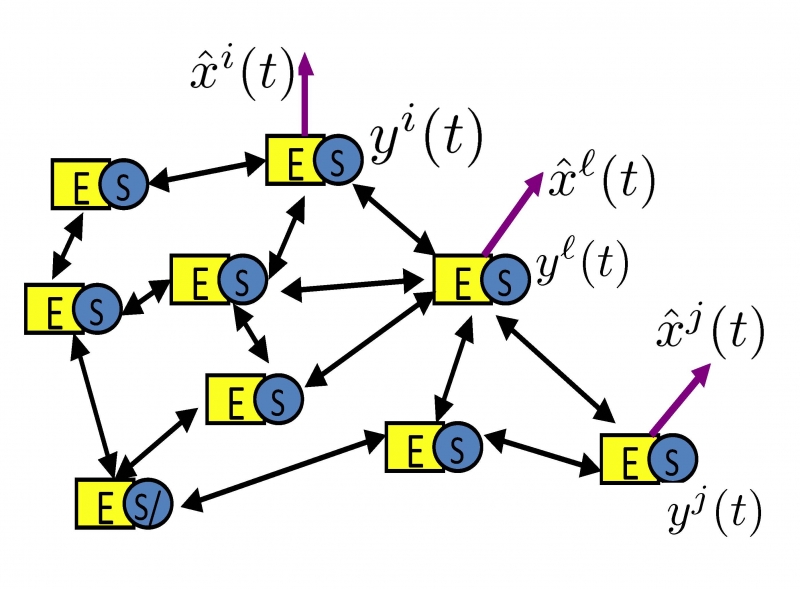 |
Distributed Estimation, Control and Optimization
One
of the most important challenges in the design of large-scale networked
control systems like WSANs and smart power grids is scalability and
robustness to subsystems failure. Each subsystem, often referred as
agent, is connected with the other subsystems though local physical
interaction as in smart power grids or though local communication as in
WSANs. Although many agents may not communicate or interact directly
with all the other agents, the system is nonetheless connected and
therefore each agent's action can affect the behavior of the system as
a whole. When the scale of these system is large, centralized control
or real-time decision making strategies are not feasible due to long
communication delay to get the information from all nodes or simply
because the amount of data became to large to be timely processed in a
single location. Moreover, differently from traditional computer
networks, some of these agents are likely to fail, communication is not
reliable, and new agents might join the network. The recent trend to
address these challenges by developing distributed algorithms for
estimation, control and optimization. For example, popular algorithms
known as consensus algorithms have been shown very effective to solve
quadratic optimization, sensor calibration, least-squares
identification, and clock synchronization. |
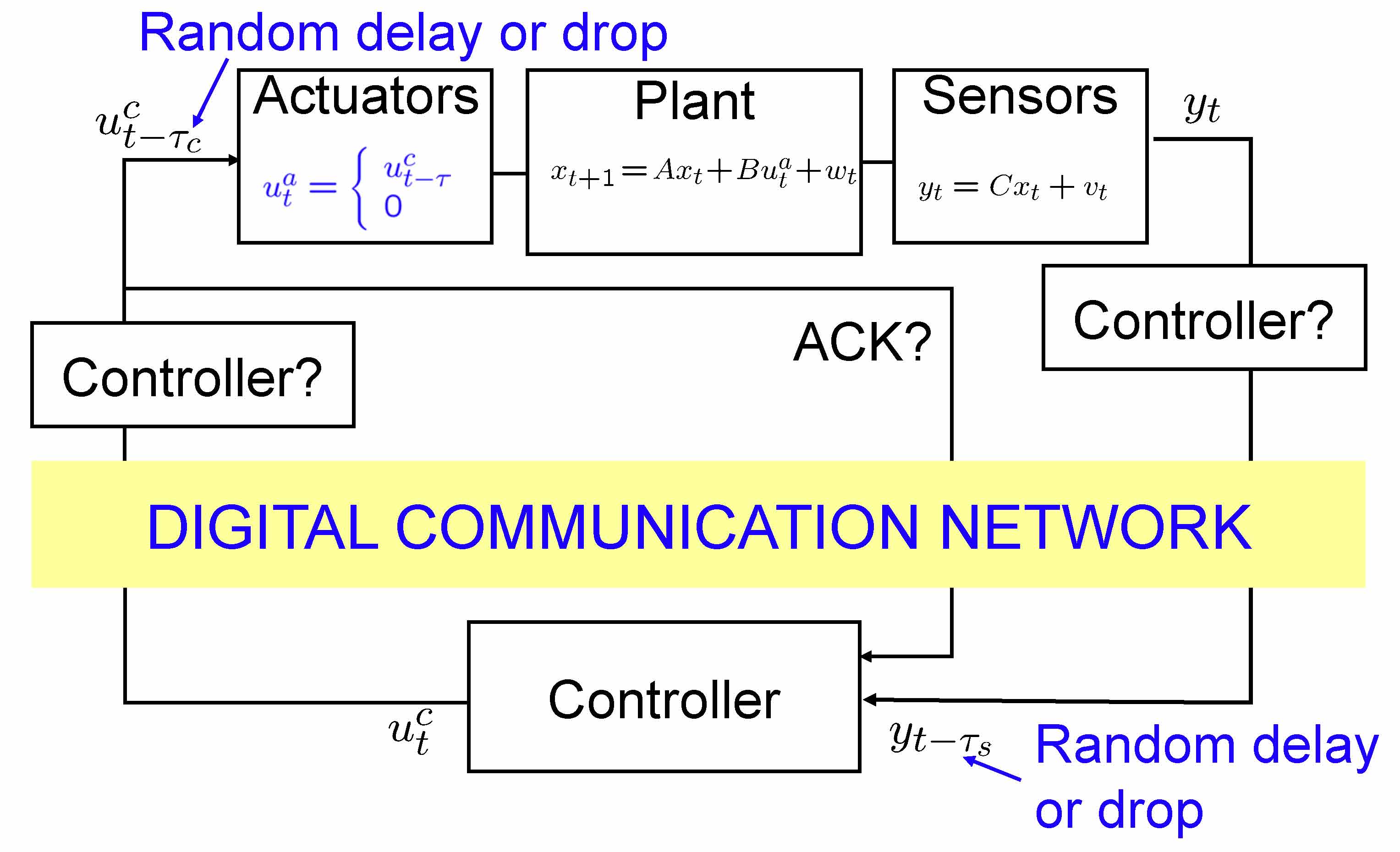 |
Packet-drop Networks
The
current trend in control systems and industrial automation is to avoid
the physical co-location of sensors, actuators and controller either by
necessity as in moving parts that cannot be cabled or by convenience as
the replacement of wired communication with wireless communication.
However, the use of an unreliable communication medium like the
wireless or a shared medium like Ethernet or Internet results in random
delay between the sensor and the controller and between the controller
and the actuator, or even packet loss due to noise or traffic
congestion. The main control challenge is understanding how to design
estimation and control systems that can compensate random delay and
packet loss. For examples, the sensors should transmit the raw
measurements or should pre-process them before transmission? What
should the actuator do if the desired control input from the controller
is not received? Does the controller know if a control packet
previously transmitted has been successfully received? Are the packets
time-stamped or not? |
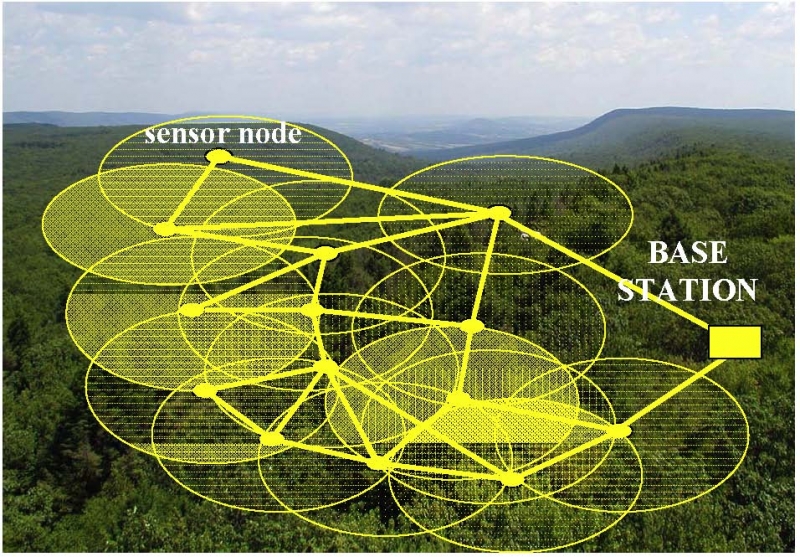 |
Wireless Sensor and Actuator Networks (WSANs)
Wireless
sensor and actuators networks are systems composed of a large number of
mainly static and battery-powered devices which are provided with
limited computational and sensing capabilities and which can
communicate with one other through low-power wireless communication.
These devices have only limited communication range, therefore they
need to operate with multi-hop communication to relay information from
one node to another, similarly to a wireless internet. WSANs have been
mainly adopted for fine-grain environmental monitoring of quantities
like temperature, humidity, light, and other chemical species, and for
indoor RF localization and tracking. More recently, the inclusion of
nodes able to act on the environment, allowed these systems to be used
also for control applications like comfort control in buildings,
climate control in greenhouses. The main control challenges in WSAN
arise from the need of parsimonious use of the
battery-powered nodes through smart sensor estimation, data
compression, MAC and routing algorithms, and the need of estimation and
control algorithms that can handle long random delay and packet loss
due to the wireless nature of the medium and the multi-hop
communication. |
|
APPLICATIONS |
|
|
Real-time smart multi-camera 3D Motion Capture:
This project addresses the problem of reconstructing the 3D motion of multiple objects moving within a predefined volume from the videos of multiple cameras. In particular, the motion is captured by tracking a number of unlabeled markers placed on each target object. Each camera placed around the arena focuses only on a small portion of the total volume to achieve high resolution, and each point of the arena can be seen from multiple cameras to avoid cluttering. The motion of the objects can be reconstructed only by combining the videos from all cameras. Although motion marker-based motion capture is a well studied problem, the main novel challenge reside in the need of performing the 3D motion capture from hundreds of cameras in real-time. This poses severe problems due to obvious bandwidth constraints and to computational constraints. Therefore, the goal of this project to devise smart distributed tracking algorithms and adaptive cameras bundling that can take advantage of smart cameras capable of autonomous computation and communication to reduce both computational burden and communication requirements.
|
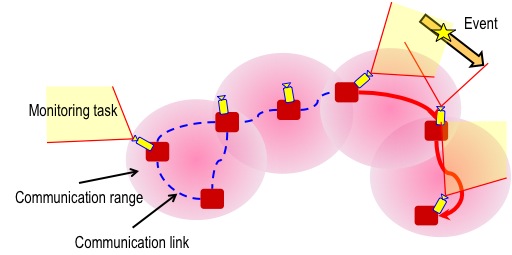 |
Self-calibration and Multiple Target Tracking in Smart Camera Networks
This project addresses the problem of designing surveillance systems based on a network with hundreds of cameras. In particular we are interested in developing a self-calibrating system that requires only minimal installation and maintenance costs, and that it is able to accomplish multiple tasks such as multiple target tracking, event detection and recognition, and redundant video storing. The main challenges reside in the bandwidth and computation requirements which makes unfeasible a centralized control and management architecture. The goal of this project is to consider a network of smart cameras, i.e. cameras with computational, memory and communication resources, which can cooperate though distributed algorithms to accomplish multiple and possibly competitive tasks, and provide the end user of the surveillance system only the essential information.
|
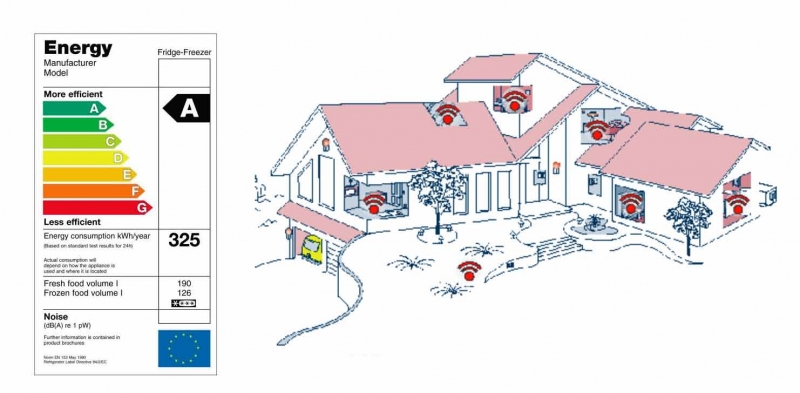 |
Identification, Monitoring and Control of Smart Greenhouses and Buildings
thermal efficiency of a building, i.e. energy labelling based on experimental data; in thermal monitoring and comfort control systems especially in large buildings; in energy saving quantification after remodeling and energy-specific retrofitting of existing buildings; and in automatic fault-detection, monitoring an control of Heating Ventilation and Air Conditioning (HVAC) systems. Particularly useful in this context is the adoption of Wireless Sensor and Actuators Networks (WSANs), which provide easy installation and maintenance. The main focus of the project is on the experimental aspects of the applications and the application of advanced control tools like adaptive estimation and model predictive control. |
|
RF Target Tracking using Wireless Sensor Networks
|
|
PAST PROJECTS |
|
|
SENSNET: Analysis and design of large
scale sensor networks
for distributed control applications
Funding: EU Marie Curie Actions IRG
Duration: 2004-2006
This
project considered the control issues and requirements arising from
applications which exploit large sensor networks for the monitoring and control
of large, rapidly changing environments. The
main innovative claims that will be generated from this project include (1)
development of new concepts and tools for the abstraction and analysis of
complex systems, (2) design of control systems under communication constraints,
and (3) real-time processing of distributed sensory data.
|
 |
RECSYS: Real-time Embedded Control of Mobile Systems with Distributed Sensing
Funding: EU IST-2001-32515
Duration: 2002-2004
The objective of this project was to develop new design methods and a unified framework for the
analysis of embedded control systems with distributed sensors. The methods should include explicit handling
of computational and communication resource limitations, structural constraints and uncertainty. Our target
application were mobile systems where a large mass of sensory data (e.g. from TV cameras) are acquired
but particular attention is needed for management of structural and real-time complexity. More information can be found in the official project website http://recsys.s3.kth.se/ .
|

